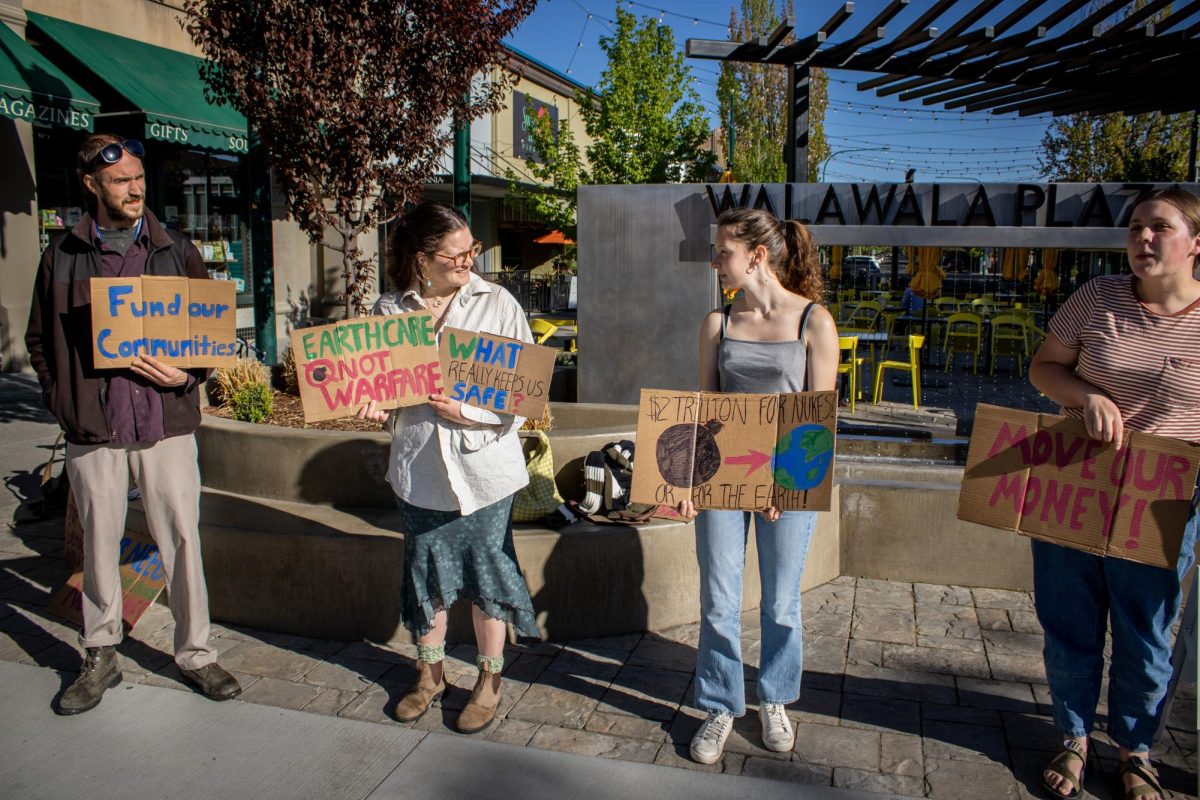If you are tired of spending your spring breaks lounging on white, sandy beaches in Mexico or partying in a crowded, smelly hotel in Florida, then consider filling one of the remaining spots in one of two alternative spring break options being offered this March.
Certain spring break trips, such as the annual trip to the Tahoma One-Drop Monastery, are already full. Around 10 students work at the Tahoma Monastery for one week, participating in the daily routine of the monastery. Later in the week, the students volunteer at the Whidbey Institute and participate in a ropes course.
If you still want to immerse yourself amongst different lifestyles, consider the Tandana Foundation, founded by Whitman alum Anna Taft in 2002, offers a health care volunteer vacation in the highlands of Ecuador. Juniors Molly Carroll and Kelsi Evans traveled there in their sophomore year.
This spring break, sophomore Allison Ikeda is flying to Quito on Saturday, March 14, and then take a two hour bus ride to Otavalo in a rural, mountainous area where she will stay for a week.
“The lodge we stayed at had delicious food and was quite comfortable,” Carroll said.
Ikeda will spend her mornings helping to provide medical care at elementary schools and rural health centers in the region.
“The most common ailments we saw were older people who had joint or bone pain, mainly because of the hard manual labor the people do all their lives,” Carroll said. “It is also really common for people’s ears to get plugged with earwax, leading to hearing loss.”
In the afternoons, Carroll said that the volunteers would spend time exploring Otavalo and the surrounding areas. They hiked to a waterfall, visited a traditional healer, spent time in the famous Otavalo street marker, visited a traditional weaver and went to a religious festival. In the evenings, they also had time for Spanish lessons.
Ikeda discovered this program through the Center for Community Service and through word of mouth.
“I wanted to do something over spring break that was related to health care and doing a kind of volunteering kind of project. My options were either doing this Ecuador trip or Habitat for Humanity,” Ikeda said.
Carroll said that no prior Spanish knowledge is necessary.
“You don’t need to know Spanish, although it certainly helps with interacting with patients,” she said. “Most of the people speak Quicha or Spanish and very few speak English, but we had a translator with us. I had no healthcare experience but other volunteers were interested in medical school. The doctor is the only one who really treats the patients.”
“I want to gain experience and see if…this is something I’m really interested in doing,” Ikeda said.
The program is still accepting space for participants, and Carroll highly recommends this trip. Because of this program, she studied abroad in South Africa on a community health program.
“I loved my experience,” she said, “The program does an excellent job of balancing vacation with volunteering.”
If, however, you would rather spend a week in the Southwestern wilderness, consider signing up for a flat-water canoe trip on the Green River, located outside of Moab, Utah.
The trip, geared towards beginners, is led by juniors Elena Gustafson and Lisa Curtis, and is sponsored by the Outdoor Program. It currently has three spots available and runs from March 13-20. The group will drive to Moab, a trip which covers 800 miles and takes a day and a half.
“We will be visiting some fun places and some gorgeous campsites on the way down and back,” Curtis said.
Once they reach their destination, they will spend four and a half days on the Green River, traveling a total of 68 miles, the leaders assuring that it will be easy to moderate intensity, covering about 20 miles a day.
“It shouldn’t be too physically intense because it’s all down river,” Gustafson said. “There are times in the evening to hang around the campsite, go for hikes and have campfires.”
All group gear is provided for with the fee, so participants will only need to bring their personal gear. “It’s pretty darn cool for students who are more used to the Northwest and Seattle because it’s just so different,” Curtis said. “It’s a really relaxing time.”
“The place we’re canoeing is quintessential Southwestern wilderness,” Gustafson said, “It is absolutely beautiful. Compared to wheatfields, it’s incredible.”
If you decide to take either of these trips this spring break, be prepared for eye-opening experiences, whether it is in the highlands of Ecuador or on a river in Utah.





